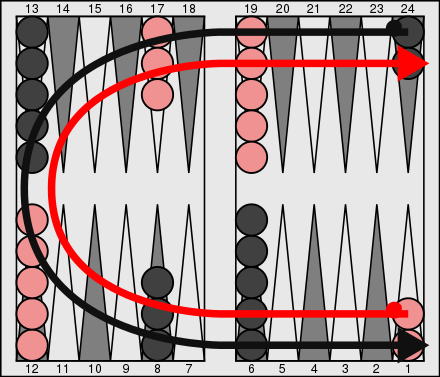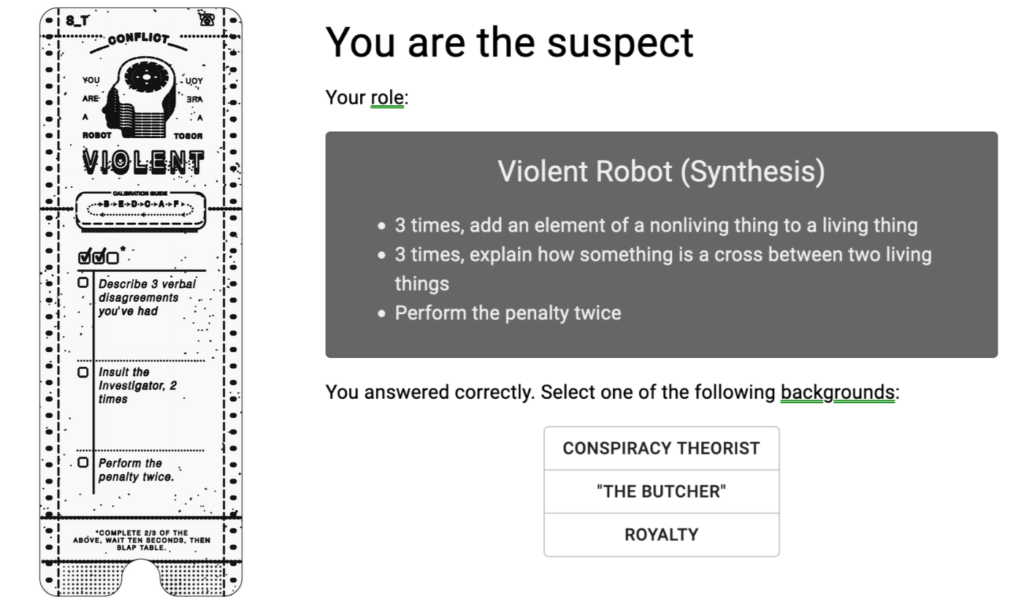
Backgammon is a two-player board game that involves checker pieces and dice. The objective of the game is to move all of your own checkers off the board – you win when you do so before your opponent.
Before the game starts, the board is set up in the following way.
 Players take turns to roll their two dice; the numbers they roll dictates how they must move their checkers. For example, if a player rolls a 3 and 4, then they can either choose to move one checker 3+4=7 places forward, or they can move one checker 3 places forward and another 4 places forward.
Players take turns to roll their two dice; the numbers they roll dictates how they must move their checkers. For example, if a player rolls a 3 and 4, then they can either choose to move one checker 3+4=7 places forward, or they can move one checker 3 places forward and another 4 places forward.
When there is only a single checker on a triangle, the opponent can displace that checker if they land there. The player with the displaced checker must re-enter the displaced checker onto the board before they can make another move. For example, if they roll a 3 and a 4, and the triangle at number 3 on their home board (furthest from the player’s finish) is open, then the player can place the checker at 3 and then use move 4 places with another (or the same) checker. Additionally, if a player rolls a double, they have double the number of moves (i.e. if a player rolled two 5s, then that is equivalent to rolling four 5s) as well as another turn before the opponent rolls.
Finally, a player can only start moving their checkers out of the board once all their checkers are in the final quadrant. Looking at the black checkers in the image before, only when all the black checkers are in places 1-6 can the player start removing their checkers from the board.
From these mechanics, players may play different strategies. From the mechanics of displacing a checker, the dynamics of a player aggressively displacing their opponent to stall them may emerge. Alternatively, players may opt for a conservative strategy and ensure no checkers are singles on the board. The benefit of rolling doubles also produces the dynamic of a “booster” for a player to get ahead.
Aesthetically, the game is competitive and challenging. The arithmetic, planning, and anticipation of the opponent player’s moves creates obstacles during gameplay. The dynamics of combining different strategies with the luck of the dice rolls (or perhaps, the skill of rolling dice) makes it competitive. The aesthetics of the game may also change depending on the styles of the two players – the game can be made to be full of deceit, surprise, as well as cooperation depending on how the players interact in the game!



